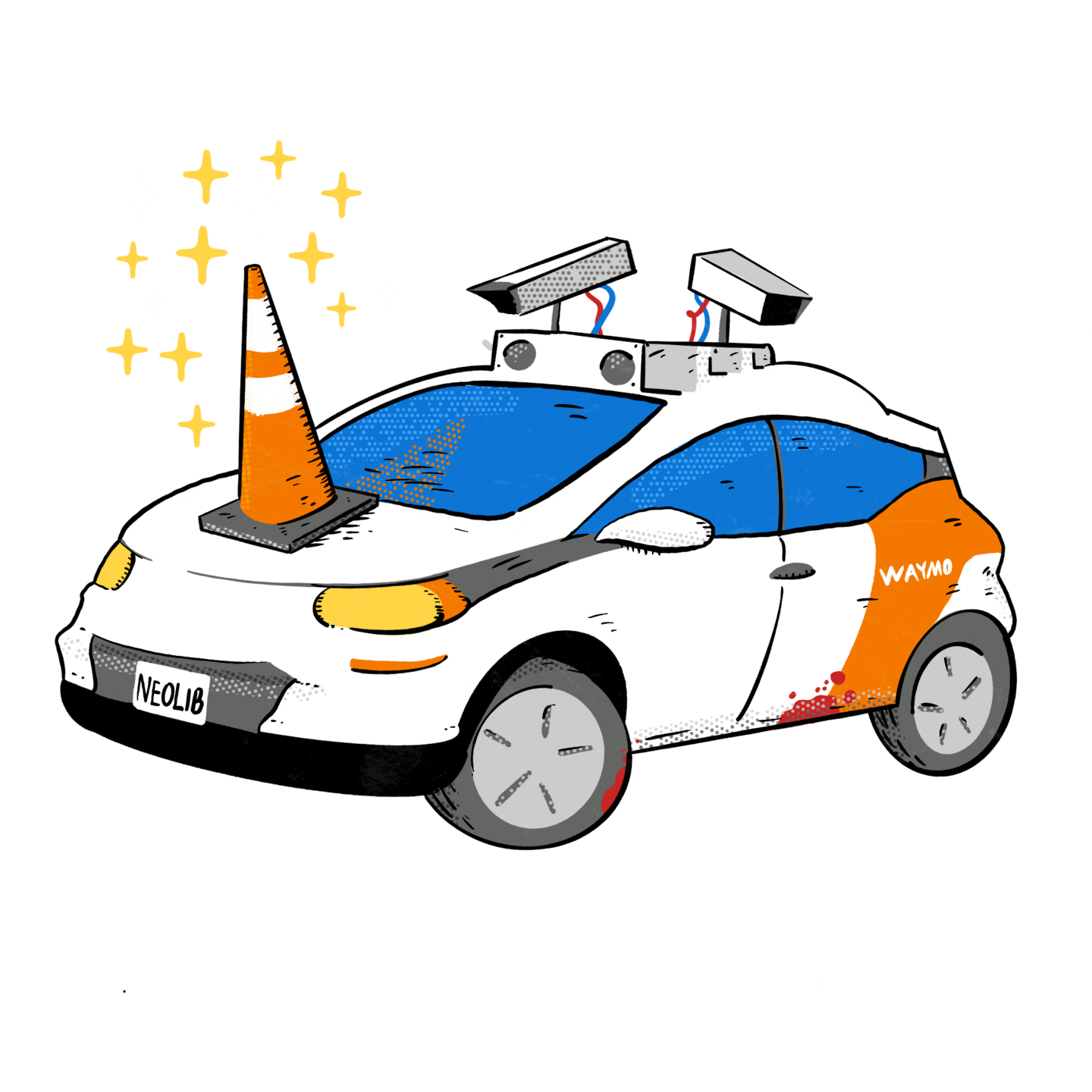
Cruise encounters a turning semi-truck
Incident
On August 7th 2023 the Cruise robotaxi named “Jingle” drove on the left side of a left-turning semi-truck, stopped (according to Cruise), and was smushed by the trailer of the semi-truck as it continued to turn. The Cruise vehicle suffered moderate damage with a destroyed sensor, dents, and a flat tire. There were no passengers in the Cruise vehicle, and no injuries.
Noteworthy was that this incident occurred the day of a critical CPUC hearing on expanding robotaxi service in California, yet was never mentioned by Cruise.
Reported details by witnesses
Key details, including descriptions, pictures, and a video, were posted on social media as shown below.

We’re actively investigating, but we can confirm that the truck attempted a left turn from the right lane while our car was passing. The AV came to a complete stop to avoid a collision when it detected the truck beginning to move, but the truck continued and struck our vehicle.
— cruise (@Cruise) August 7, 2023

There was also a story in Inside EVs on the incident.
Cruise report filed with DMV (none filed!)
The DMV Autonomous Vehicle Collision Reports does not contain a report for this crash. While Waymo continued to report crashes to the California DMV, the safety regulator for robotaxis in California, it appears that Cruise simply stopped sending such reports for approximately 6 weeks, until 9/27/2023. There was a vagueness in the DMV reporting requirements that Cruise decided to take advantage of. Incidents only needed to be reported if a robotaxi system was in “test mode”. Cruise claimed that since the CPUC and the DMV had fully approved their system that they were no longer in “test mode” and therefore no longer needed to report crashes. This lack of reporting and transparency was of course considered very problematic by SF city officials.
Fault
Some people, including Cruise representatives, tried to put full blame on the truck driver for turning left from the right side of the roadway. But note the relevant vehicle code:
CVC 22100(b): “The approach for a left turn shall be made as close as practicable to the left-hand edge of the extreme left-hand lane or portion of the roadway”
CVC 21801(b): “A driver [after yielding to oncoming traffic] may turn left…and the drivers of vehicles approaching the intersection…shall yield the right-of-way to the turning vehicle”
The vehicle code means that it is legal to make a left turn from the right side of the street if that is the only way practicable (capable of being put into practice). The second code means that other vehicles, in this case the Cruise, need to yield the right-of-way when a vehicle is turning.
The picture below shows the street that the semi-truck was turning onto. Note how narrow the street is due to the cars parked on both sides. This means that the semi-truck would need to completely straighten out before entering Oak Street. In order to fully straighten out, the truck would have to start its left turn from the far-right side of Stanyan Street, as was done. It is the only way turning a semi-truck onto Oak St is practicable.

From the video clip one can see that the truck was using its turn signal to clearly indicate that it was turning left. Also note that no other vehicles went to the left of the turning truck.

As with other incidents, the Cruise vehicle detected a problem (that the semi-truck was turning left into its path), and acted upon that information by simply stopping and freezing at that location. But stopping in the path of the turning trailer of the semi-truck, behind the cab and out of view of the truck driver’s mirrors, was a prime cause of the collision. Semi-trucks are large unwieldy vehicles that are known to be dangerous to be near. The Cruise vehicle should have stopped further back, to better avoid being near a dangerous situation. Not stopping earlier, further from the semi-truck, was a mistake made by the Cruise Automated Driving System (ADS).
Any human driver would have realized the mistake of stopping too close to the turning truck, and would have immediately backed up. Also, a human driver could have simply honked the horn of their vehicle to get the truck driver to stop. And in case you are wondering whether Cruise Vehicles can and do use their horns for safety, yes they indeed do! But not in this important situation apparently. Avoiding the crash was trivially simple if these defensive driving measures had been used.
The truck driver should have been aware of the Cruise vehicle getting too close to the truck, and is therefore also at fault. They might have also been found to be illegally at fault. But the Cruise automatic-driving-system was the prime cause.
The Untruths by Cruise

Cruise spokesperson on Xitter attempted to convey that the Cruise vehicle was not at fault because it had stopped, and was then hit by the truck trailer. But the Cruise vehicle stopping was actually the primary cause of the collision. Also, Cruise never reported this incident to the DMV, the regulator of the vehicles, which is very disconcerting.
Conclusion
Their “deer in the headlights“ algorithm of stopping and freezing in front of danger hasn’t worked out well for deer, and once again, it doesn’t work for robotaxis either.
The crash would not have occurred if Cruise vehicles had reasonable defensive driving capability. The Cruise vehicle could have easily avoided the crash by not pulling so close to the turning truck, reversing when the truck was turning, or even honking at the truck driver.

